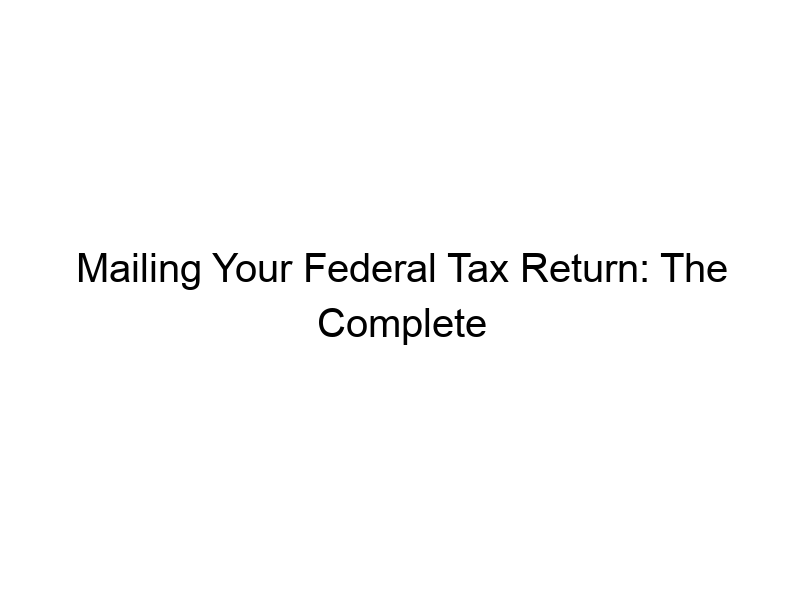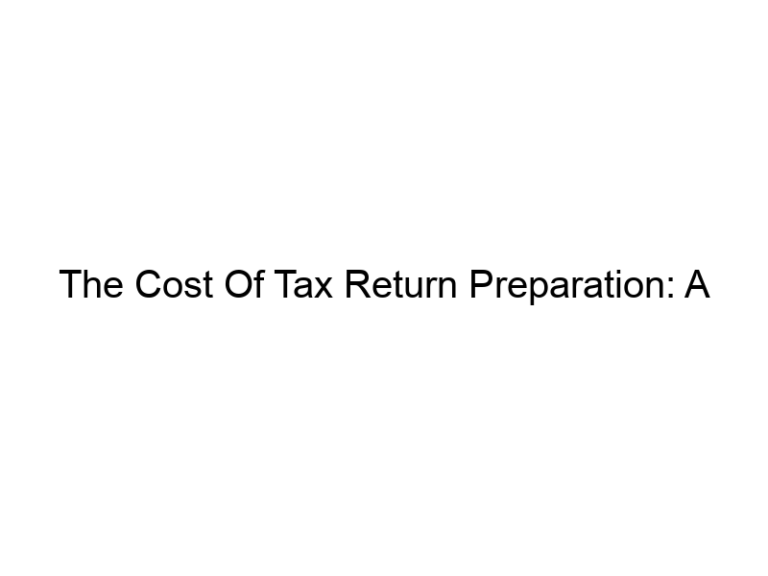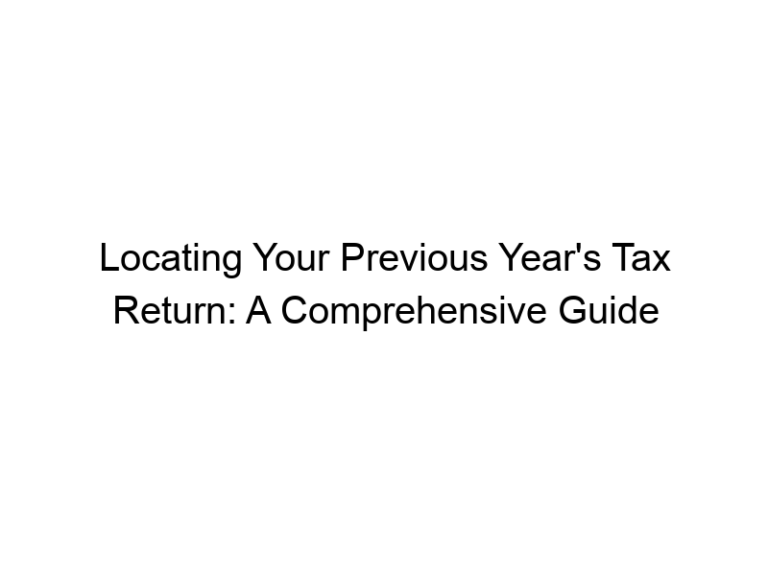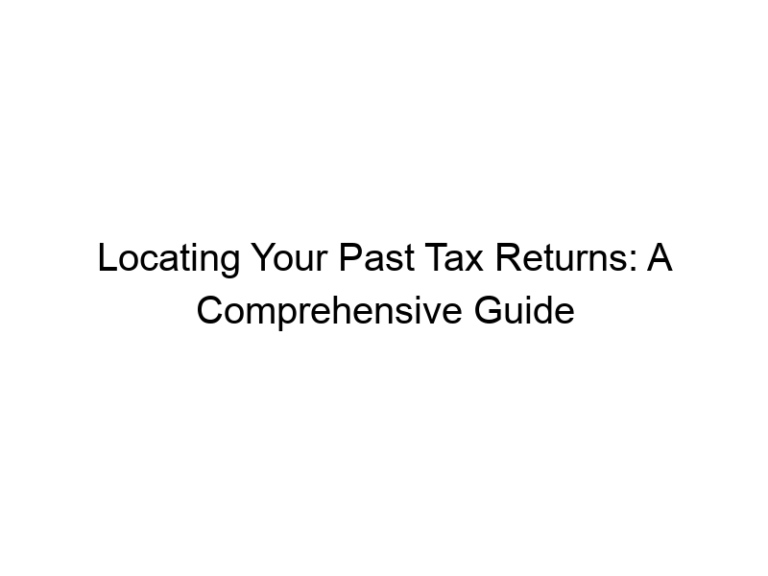Mailing Your Federal Tax Return: The Complete Guide
Filing your taxes can be stressful, but knowing where to send your federal tax return is a crucial first step. This comprehensive guide will walk you through the process, explaining everything from finding the correct address to understanding the importance of accurate mailing. You’ll learn how to ensure your return arrives safely and on time, avoiding potential penalties. Let’s dive into understanding where do I mail my federal tax return.
A federal tax return is a document you file with the Internal Revenue Service (IRS) to report your income and calculate your tax liability for the year. It’s a formal record of your financial activities for tax purposes. Accuracy is paramount, as inaccuracies can lead to audits or penalties.
Filing your tax return is a legal obligation
for most US citizens and residents. Failure to file can result in significant penalties, including interest charges and potential legal action. It’s also how you receive any tax refunds you may be entitled to.
Key Components of a Federal Tax Return
A federal tax return includes various sections, each requiring specific information. This information includes your personal details (Social Security number, address), income sources (wages, investments), deductions, and credits. The specific form you’ll need depends on your filing status and income.
Finding the Correct Mailing Address
Determining Your IRS Service Center
The IRS has numerous service centers across the country. The specific address you need depends on your state and the type of tax form you’re submitting. The IRS website provides a tool to locate the correct address based on your zip code and form. Using the incorrect address can significantly delay processing.
Using the IRS Website’s Address Locator
The IRS website offers a user-friendly address locator. Simply enter your zip code and the form number (e.g., Form 1040, Form 1040-SR), and the website will provide the appropriate mailing address. This is the most reliable method to ensure your return reaches the correct destination.
Understanding the Importance of the Correct Address
Sending your return to the wrong address can lead to significant delays in processing. Your return might be lost, causing processing delays and potentially penalties if it’s filed late. Using the IRS’s official address locator helps avoid these issues.
Preparing Your Tax Return for Mailing
Gathering Necessary Documents
Before mailing, gather all necessary documents, including your W-2s, 1099s, and any other supporting documentation. Make sure all information is accurate and complete. Double-checking prevents errors and delays.
Completing Your Tax Return Accurately
Complete your tax return thoroughly and accurately. Use tax software or consult with a tax professional if you need assistance. Errors can lead to delays, audits, and penalties. Take your time and review your work carefully.
Choosing a Secure Mailing Method
Consider using certified mail with return receipt requested for proof of delivery. This provides evidence that your tax return was received by the IRS. While not mandatory, it offers peace of mind, especially for large refunds or complex returns.
Alternatives to Mailing: Electronic Filing
E-filing Through Tax Software
E-filing your tax return through reputable tax software (TurboTax, H&R Block, TaxAct) is a fast and efficient way to file. This method is generally faster than mailing and reduces the risk of errors or loss.
E-filing Directly Through the IRS Website
If you have a simple tax situation, you might be able to file directly through the IRS website using their free online filing tool. This option is straightforward and generally quick.
Benefits of E-Filing
E-filing offers several advantages, including speedier processing, reduced errors, and the ability to track the status of your return online. It’s generally recommended over mailing whenever possible.
Understanding the Risks of Mailing
Potential for Loss or Delay
Mailing your tax return carries the risk of loss or delay in transit. While uncommon, it’s a possibility. Using a secure mailing method mitigates this risk but doesn’t eliminate it entirely.
Security Concerns
Mailing sensitive financial information carries inherent security risks. While the postal service is generally secure, there’s always a small chance of identity theft or data breaches. E-filing is generally more secure.
Tracking Your Return
Tracking your mailed tax return can be difficult. Certified mail with return receipt requested offers some tracking, but it’s not as comprehensive as the tracking you receive with e-filing.
Tracking Your Mailed Return
Using Certified Mail with Return Receipt Requested
Certified mail with return receipt requested provides proof of delivery and allows you to track your return’s progress. The receipt confirms delivery to the IRS, offering peace of mind.
What to Do if Your Return Doesn’t Arrive
If you mailed your return and haven’t received confirmation of receipt or haven’t heard back from the IRS, contact them immediately. They have methods for verifying receipt of your return, even without a tracking number.
Contacting the IRS for Status Updates
The IRS website provides resources to check the status of your tax return once it’s been processed. If you haven’t received a refund or notice after a reasonable timeframe, contact the IRS.
Deadlines and Penalties
Federal Tax Filing Deadlines
The annual tax filing deadline is typically in mid-April. Failure to file by this deadline can result in significant penalties. Check the IRS website for the exact date as it can vary slightly.
Penalties for Late Filing
The IRS imposes penalties for late filing, typically calculated as a percentage of the unpaid tax. The penalty increases the longer you delay filing. Accurate and timely filing is crucial to avoid penalties.
Frequently Asked Questions
What happens if I send my tax return to the wrong address?
Sending your return to the wrong address will likely delay processing. The IRS may attempt to forward it, but this can take time. Contacting the IRS immediately is crucial to resolve the issue.
How long does it take for the IRS to process a mailed return?
Processing times can vary, depending on several factors, including the complexity of your return and the IRS’s current workload. You can typically expect a response within several weeks to a few months.
What if I lost my tax return confirmation?
If you lost your confirmation, contact the IRS immediately. They may have a record of your return, or they can help you resolve the issue.
Can I mail my tax return from outside the US?
Yes, but you’ll need to follow specific instructions provided by the IRS for international mailing. The process might be slightly more complex.
Is it safe to mail my tax return?
Mailing is generally safe, but it carries more risk than e-filing. Using certified mail with return receipt requested helps mitigate some of these risks.
Final Thoughts
Knowing where do I mail my federal tax return is critical for avoiding delays and penalties. While mailing is an acceptable method, e-filing is generally faster, safer, and more efficient. This guide has provided a detailed overview of the mailing process, helping you navigate the complexities of tax filing. Remember to use the IRS website’s address locator for accurate addressing, choose a secure mailing method, and consider e-filing for a faster and safer experience. Don’t delay—file your taxes on time and accurately to avoid potential issues. Accurate filing is essential for a smooth tax season! Remember to always check the IRS website for the most up-to-date information and guidelines.






